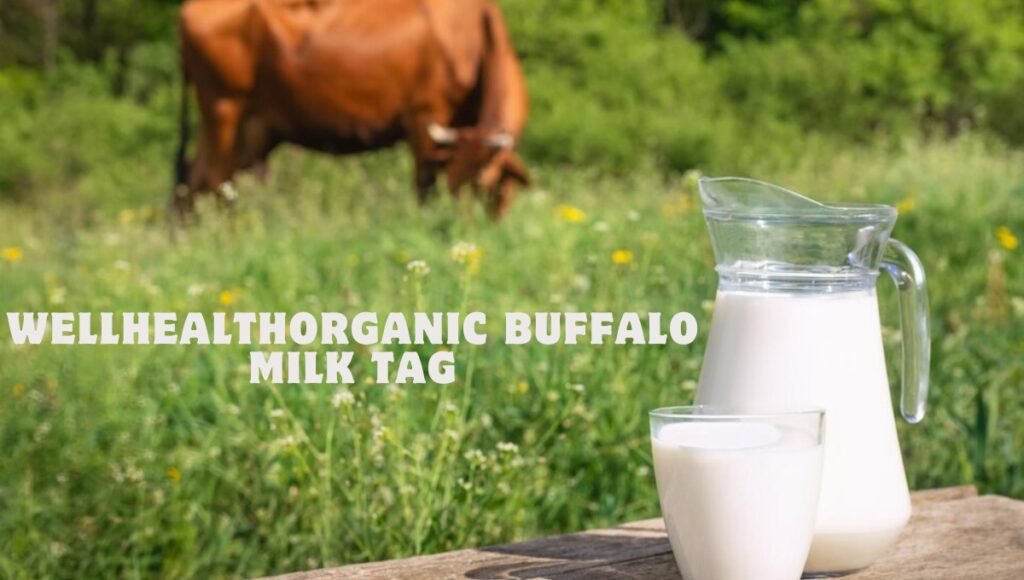Health & Fitness
Why Your Lotion Isn’t Working: Common Mistakes to Avoid

If you’ve been diligently applying your lotion or body moisturizer for dry skin but haven’t seen the results you expected, you’re not alone. Many people experience the frustration of using a lotion for dry skin only to find that it doesn’t seem to help as much as they hoped. While the solution may seem simple, there are several common mistakes that could be preventing your skin from getting the hydration it needs.
In this article, we will explore why your lotion might not be working, common mistakes to avoid, and tips for choosing the right products to effectively treat dry skin. Understanding these key factors can help you achieve smoother, more hydrated skin and restore its natural glow.
Table of Contents
1. Choosing the Wrong Lotion for Your Skin Type
When it comes to selecting the right lotion for dry skin, it’s important to choose a product that suits your skin’s specific needs. Not all moisturizers are created equal, and using the wrong one can leave your skin feeling greasy or still parched.
Key Considerations:
- Ingredients: Look for ingredients such as hyaluronic acid, glycerin, ceramides, and natural oils (like jojoba, almond, or argan oil) that attract and lock in moisture.
- Consistency: Lighter moisturizer might not provide enough hydration for very dry skin, while thicker creams or body butters may be more effective.
- Scented vs. Unscented: Fragrances can irritate sensitive skin and lead to further dryness or discomfort. Opt for fragrance-free or hypoallergenic products for best results.
2. Applying Lotion on Dry Skin
One of the biggest mistakes people make when applying lotion for dry skin is using it on skin that’s too dry. For optimal absorption, your skin needs to be damp when you apply your body moisturizer. If you wait too long after showering or bathing to apply your moisturizer, your skin may lose its moisture before the lotion has time to work.
How to Apply Lotion for Best Results:
- After showering or washing your hands, gently pat your skin with a towel, leaving it slightly damp.
- Immediately apply your moisturizer to lock in the moisture.
- For very dry skin, consider layering with a thicker cream or body butter to seal in hydration.
3. Overusing or Underusing Lotion
While more lotion might seem like a solution, using too much of your moisturizer doesn’t necessarily lead to better results. On the other hand, not applying enough can leave your skin unprotected.
Finding the Right Balance:
- Amount: Use enough lotion to cover your entire body without over-saturating your skin. For most people, a quarter-sized amount of body moisturizer for dry skin is sufficient for each section of the body.
- Frequency: Apply your moisturizer at least once a day, but for very dry or flaky skin, two or three applications might be needed to restore hydration.
4. Not Giving Lotion Enough Time to Absorb
Another mistake many people make is expecting immediate results. Lotion needs time to sink into the skin and create a barrier that prevents moisture loss. After applying your moisturizer, give it some time to absorb before dressing or exposing your skin to harsh conditions.
Tip:
Let your lotion absorb into the skin for at least 5-10 minutes before putting on clothes, especially if you use a heavier cream or ointment.
5. Using the Same Lotion Year-Round
Seasonal changes play a major role in skin hydration. What works well in the humid summer months might not be enough during the dry, cold winter. During colder weather, your skin may require a heavier moisturizer with more occlusive ingredients to create a barrier against the harsh air.
Adjusting for the Seasons:
- Summer: Lightweight lotions and gel-based moisturizers work well in warmer months.
- Winter: Consider switching to a thicker body moisturizer or using a body butter with rich emollients that provide extra protection.
6. Ignoring the Importance of Sun Protection
Dry skin is more susceptible to environmental damage, including UV radiation from the sun. If your lotion doesn’t contain SPF, you may be neglecting a crucial step in protecting your skin. Sun exposure can cause your skin to lose moisture more quickly, making dryness worse.
How to Add SPF to Your Skincare Routine:
- Look for moisturizers that include SPF (preferably SPF 30 or higher) as part of their formula.
- If your body lotion doesn’t include sunscreen, apply a broad-spectrum sunscreen over the lotion for added protection.
7. Skipping Exfoliation
While moisturizing is essential, it’s also important to exfoliate your skin regularly. Dry, flaky skin can prevent moisturizers from absorbing properly, leaving your skin feeling rough or uneven. Exfoliating helps remove dead skin cells and allows your body moisturizer to work more effectively.
Exfoliation Tips:
- Exfoliate your skin once or twice a week, depending on your skin type.
- Use a gentle exfoliating scrub, or opt for chemical exfoliants that contain AHAs or BHAs for smoother, more hydrated skin.
8. Not Hydrating from the Inside Out
No matter how much body moisturizer for dry skin you use, your skin’s hydration levels depend on more than just external products. Drinking plenty of water and maintaining a healthy diet are essential to achieving soft, supple skin.
Hydration Tips:
- Drink at least eight glasses of water a day to keep your skin hydrated from the inside out.
- Include omega-3 fatty acids, vitamins A and E, and antioxidants in your diet to support skin health.
9. Relying Too Much on One Product
While it’s important to find the right body moisturizer for dry skin, relying on a single product might not be enough. Sometimes, your skin needs extra help from targeted treatments or different formulations, especially if you have very dry patches or eczema.
Targeting Problem Areas:
- Use a richer ointment or balm on extra dry patches like elbows, knees, and heels.
- Consider adding a hydrating serum before your lotion for extra moisture.
10. Ignoring Lifestyle Factors
Your lifestyle choices can affect your skin’s health. Hot showers, long exposure to central heating, and certain medications can contribute to skin dryness, even if you’re using the best lotion for dry skin.
How to Protect Skin from Environmental Stressors:
- Limit the use of hot showers, and use lukewarm water to wash your skin.
- Use a humidifier during the colder months to add moisture to the air.
- Avoid harsh soaps that strip the skin of its natural oils.
Health & Fitness
Optimal Health Wellness For STD Test and RFT Test for in Mumbai

Regular health checkups are crucial for early detection and prevention of serious health issues. An STD test in Mumbai helps diagnose sexually transmitted infections (STIs) at an early stage, ensuring timely treatment and reducing the risk of complications. Similarly, an RFT test in Mumbai provides a comprehensive assessment of kidney function, analyzing multiple parameters to detect potential renal concerns. With advanced diagnostic centers in Mumbai offering reliable testing services, prioritizing your health has never been more convenient.
Table of Contents
RFT Test for Comprehensive Kidney Assessment
The kidneys play a vital role in filtering waste and maintaining the body’s fluid and electrolyte balance. An RFT test in Mumbai evaluates kidney function by analyzing multiple parameters related to renal health. This test includes:
- Serum Creatinine Levels – Measures kidney filtration efficiency.
- Blood Urea Nitrogen (BUN) – Evaluates the level of waste products in the blood.
- Electrolyte Levels (Sodium, Potassium, Chloride) – Monitors fluid balance and kidney efficiency.
- Uric Acid Levels – Assesses risks related to kidney stones and gout.
- Calcium & Phosphorus Levels – Evaluates bone health and mineral balance linked to kidney function.
- Glomerular Filtration Rate (GFR) – Determines how well the kidneys are filtering blood.
An RFT test in Mumbai is particularly recommended for individuals with pre-existing health conditions, those undergoing long-term medication use, and patients preparing for medical procedures requiring kidney function evaluation.
Why Consider an RFT Test
An RFT in Mumbai is advised for individuals experiencing:
- Unexplained Fatigue or Weakness – Possible signs of declining kidney function.
- Swelling in Hands, Feet, or Face – May indicate fluid retention due to kidney dysfunction.
- Changes in Urine Output or Color – Can signal kidney impairment.
- Persistent High Blood Pressure – Often linked to kidney health issues.
- Nausea, Vomiting, or Loss of Appetite – Common symptoms associated with kidney disease.
- Recurrent Kidney Infections – Chronic infections can contribute to long-term renal damage.
Routine RFT in Mumbai screenings help detect kidney diseases early, allowing individuals to take preventive measures and seek timely medical intervention.
Why Regular STD Testing is Essential?
Sexually Transmitted Diseases (STDs) can often remain undetected in their early stages, leading to severe complications if left untreated. An STD test in Mumbai helps in early diagnosis, enabling individuals to receive prompt treatment and prevent the spread of infections.
Many STDs, such as chlamydia, gonorrhea, syphilis, and HIV, may not show noticeable symptoms initially. Regular STD in Mumbai screenings are essential for sexually active individuals, especially those with multiple partners, a history of unprotected intercourse, or previous STI diagnoses.
Timely detection through an STD in Mumbai helps prevent long-term health complications such as infertility, chronic pain, and increased susceptibility to other infections. Leading diagnostic centers in Mumbai offer confidential and discreet testing services, making it convenient for individuals to maintain their sexual health.
STD Testing and Its Role in Sexual Health
Sexually transmitted diseases (STDs) can have long-term health implications if not detected and treated early. An STD test in Mumbai is crucial for identifying infections, even when no symptoms are present. Regular screenings help prevent complications such as infertility, chronic pain, and increased vulnerability to other infections.
Many STDs do not show immediate symptoms, making routine STD in Mumbai screenings necessary for sexually active individuals. Early detection ensures timely medical intervention, reducing the risk of spreading infections and improving treatment outcomes.
Healthcare providers in Mumbai offer reliable STD services, ensuring privacy and accuracy. Whether you have specific concerns or want to monitor your sexual health proactively, an STD in Mumbai provides peace of mind and promotes overall well-being.
Diagnostic Centers for STD and RFT Testing in Mumbai
Several reputed diagnostic centers provide STD in Mumbai and RFT test in Mumbai, ensuring accurate results and timely medical consultation. When choosing a testing facility, consider the following factors:
- Home Sample Collection – Many providers offer discreet and convenient home sample collection.
- Quick Report Turnaround – Choose labs that provide fast test results for early medical consultation.
- Comprehensive Health Packages – Some providers offer combined STD and kidney function test packages for a complete health evaluation.
Diagnostic centers in Mumbai ensure individuals receive expert guidance and accurate test reports for proper health monitoring.
Comprehensive Health Screening for Sexual & Kidney Health
An STD in Mumbai and an RFT test in Mumbai together provide a thorough evaluation of overall health. Regular screenings help detect infections and kidney-related concerns early, enabling effective management and treatment.
Many healthcare providers offer customized health packages that combine multiple tests for individuals requiring regular monitoring. These screenings provide valuable insights, supporting informed healthcare decisions and preventive health measures.
Conclusion
Routine screenings, including an STD test in Mumbai and an RFT in Mumbai, play a vital role in maintaining overall health. STD testing helps detect infections early, while kidney function tests ensure proper renal health monitoring and prevent severe complications.
With top diagnostic centers in Mumbai offering reliable and accessible services, scheduling an STD in Mumbai and an RFT in Mumbai is both convenient and efficient. These tests empower individuals to take control of their health, seek timely medical advice, and implement preventive measures for long-term well-being.
Taking a proactive approach to health ensures a better quality of life. Book an STD test in Mumbai and an RFT test in Mumbai today to stay informed about your health and make well-informed medical decisions.
Health & Fitness
Navigating Life Saving CPR Techniques in Locations: Adaptation for When Help Is Far

Introduction
Imagine going on a beautiful trekking adventure in a remote national park. The breathtaking views are interrupted when tragedy strikes, and someone in your group collapses without warning. With medical help hours away, your immediate actions can mean the difference between life and death. Knowing how to perform CPR (Cardiopulmonary Resuscitation) is crucial, especially in places where emergency services are not readily accessible. This article explores how CPR techniques can be adapted and applied in remote areas, equipping you with the knowledge and confidence to act in situations where every second counts.
Table of Contents
Importance of CPR in Remote Areas
Why is Immediate Action Necessary?
The first few minutes following a cardiac arrest are critical, often referred to as the “golden hour.” During this time, for every minute without CPR techniques, the chance of survival decreases by 7% to 10%. Performing CPR maintains blood flow to vital organs and can effectively sustain life until professional help arrives, making immediate action during this golden hour crucial for saving lives. Immediate CPR can double or triple a victim’s chance of survival during cardiac arrest. In remote areas, the window for survival in cardiac arrest cases is narrower because:
- Delayed Emergency Services: The response time for medical services is extended due to challenging terrains and distances.
- Communication Barriers: Cellular networks may be unreliable, complicating efforts to call for help.
- Lack of Immediate Medical Facilities: Proximity to hospitals or fully equipped medical centers can be hours away.
Basic CPR Techniques: A Lifesaver’s Toolkit Standard CPR Protocol
Knowing the steps of CPR techniques is important for everyone, but particularly critical in remote settings:
- Assess the Situation: Ensure the environment is safe for both you and the victim. Check for responsiveness and breathing.
- Call for Help: If possible, send someone to call emergency services while you begin CPR.
- Begin Chest Compressions: Push hard and fast at the center of the chest:
- Depth: At least 2 inches
- Rate: 100 to 120 compressions per minute
- Ventilations: If trained, provide rescue breaths after every 30 compressions, or continue compressions alone if not trained in breathing techniques.
Adaptations for Outdoor Environments
Performing CPR techniques and first aid outside a controlled environment requires a few adjustments:
- Location Selection: Move the victim to a firm, flat surface if possible.
- Breathing Techniques: In dusty or windy conditions, focus on continuous chest compressions. In harsh conditions, uninterrupted chest compressions can be as effective as standard CPR when performed correctly.
Overcoming Challenges in Remote CPR
Communication and Coordination
Having a plan can alleviate some of the stress when medical incidents occur far from the facility:
- Satellite Phones: Where feasible, carry a satellite phone to ensure the ability to send distress signals.
- Whistles and Flares: Useful for signaling nearby personnel or passing trekkers.
Mental Preparedness
The psychological impact of performing CPR in remote locations should not be underestimated:
- Training Courses: Engaging in regular first aid training can build muscle memory and confidence. First Aid Training Adelaide CBD offers comprehensive courses that cater to both urban and remote scenarios, preparing individuals to act confidently in emergencies.
- Peer Support: Talking through scenarios with travel companions can foster a team approach in emergency situations.
Stories from the Field: Real-Life Experiences
Saving Lives Against All Odds
Drawing inspiration from real-life experiences can help people get ready and stay motivated. When a teenage hiker abruptly fainted while displaying no indications of respiration during an Appalachian Mountain journey, the group leader was presented with a potentially fatal predicament. The leader acted quickly because there was no medical support in the area and it was expected to take more than two hours for relief to arrive. The tour leader started CPR right away, keeping constant compressions while comforting the others as others got emergency supplies and attempted to call assistance.
The situation was made more intimidating by the difficult terrain and remote location, but the leader’s training gave them the confidence they needed. In order to avoid fatigue, the team leader switched off with another member throughout the seemingly endless CPR. This cooperation kept the hiker moving until expert assistance eventually showed up.
Thus the leader’s ability to maintain composure and use the right procedures was directly responsible for the hiker’s survival, according to later confirmation from emergency personnel. Particularly in distant and high-pressure settings, the experience made clear how vital CPR techniques and First Aid training is. It was a potent reminder that poise and readiness are crucial when it comes to saving a life.
Conclusion
Medical emergencies often occur without warning, and in remote areas, the stakes are even higher. Learning CPR techniques & First Aid methods is not only wise but essential for anyone venturing into isolated territories. Therefore, taking a CPR techniques and First Aid Course, carrying basic first aid items, and mentally preparing for emergencies can transform a potentially tragic situation into a testament of preparedness and poise. Remember, the next life you save could be a loved one’s, or even your own. Be ready, stay calm, and act swiftly. Your proactive learning can be a beacon of hope when it seems all hope is lost.
Health & Fitness
Discovering Wellhealthorganic Buffalo Milk Tag: A Healthier Choice for You and Your Family

When it comes to dairy, you might have your favorite: cow’s milk, almond milk, or maybe even oat milk. But have you ever tried buffalo milk? If not, you’re in for a treat! In this post, we’ll dive into the world of buffalo milk, particularly focusing on the benefits of wellhealthorganic buffalo milk tag. You’ll learn about its nutritional advantages, how it compares to other types of milk, and why you might want to consider adding it to your diet. Let’s get started!
What is Wellhealthorganic Buffalo Milk Tag?
Buffalo milk comes from water buffaloes, which are primarily found in South Asia, Europe, and parts of the Americas. Unlike cow’s milk, buffalo milk has a creamier texture and a slightly sweeter taste. It’s rich in nutrients and often preferred for making cheese, yogurt, and other dairy products.
Why Choose Buffalo Milk?
Now, you might be wondering, “Why should I switch to wellhealthorganic buffalo milk tag?” Here are a few reasons that might convince you:
1. Higher Nutritional Value
Buffalo milk is packed with essential nutrients. Here’s how it compares to cow’s milk:
- Fat Content: Buffalo milk typically has a higher fat content (around 7-8%) than cow’s milk (about 3-4%). This means it’s creamier and richer, making it a great option for cooking and baking.
- Protein: It contains more protein, which is essential for muscle repair and growth. If you’re looking to boost your protein intake, buffalo milk is a delicious way to do it!
- Vitamins and Minerals: wellhealthorganic buffalo milk tag is rich in calcium, phosphorus, and vitamins A and B12. These nutrients are vital for bone health and overall well-being.
2. Lactose-Friendly
If you’re lactose intolerant but still crave dairy, buffalo milk might be a good option. It has slightly lower lactose levels than cow’s milk, making it easier for some people to digest. However, it’s still important to consult with a healthcare provider before making any changes to your diet.
3. Better for Weight Management
Due to its high-fat content, wellhealthorganic buffalo milk tag can help you feel fuller for longer. This satiety can help curb those pesky snack cravings throughout the day. Plus, the protein in buffalo milk aids in muscle maintenance, which is beneficial for anyone trying to lose weight or stay healthy.
How to Incorporate Buffalo Milk into Your Diet
So, you’re sold on buffalo milk. Now what? Here are some delicious ways to incorporate it into your daily meals:
1. Smoothies
Start your day with a nutritious smoothie! Blend buffalo milk with your favorite fruits, a handful of spinach, and maybe a scoop of protein powder for an extra kick.
2. Cheese and Yogurt
Buffalo milk is the secret ingredient behind some of the best cheeses, like mozzarella and ricotta. Try making homemade cheese or yogurt for a fun and rewarding cooking experience.
3. Cooking and Baking
Replace cow’s milk with buffalo milk in your favorite recipes. It adds a rich flavor and creamy texture to soups, sauces, and baked goods.
4. Coffee and Tea
If you love lattes or creamy tea, consider using buffalo milk instead of regular milk. It froths beautifully and adds a delightful taste to your beverages.
The Environmental Impact of Wellhealthorganic Buffalo Milk Tag
When choosing dairy products, many people consider the environmental impact. Water buffaloes generally require less water and feed compared to cows. They’re also known for their adaptability to different climates, making them a sustainable choice for dairy production. So, by opting for buffalo milk, you’re not only making a healthier choice for yourself but also for the planet!

Where to Find WellHealthOrganic Buffalo Milk Tag
You might be wondering where to find this magical liquid. WellHealthOrganic buffalo milk tag offers that’s organic and free from harmful additives. You can usually find it in health food stores, specialty grocery stores, or online. Look for labels that mention wellhealthorganic buffalo milk tag to ensure you’re getting a quality product.
Conclusion
Wellhealthorganic buffalo milk tag is more than just a dairy alternative; it’s a nutritious powerhouse that offers a wealth of health benefits. From its rich flavor and creamy texture to its impressive nutritional profile, it’s worth considering for your family’s diet. Whether you’re whipping up smoothies, baking delicious treats, or enjoying a comforting bowl of yogurt, buffalo milk can be a fantastic addition to your culinary adventures. So why not give it a try? Your taste buds—and your body—might just thank you!
-

 Games10 months ago
Games10 months agoMeerut City Satta King: Your Ultimate Guide to Winning!
-

 Business10 months ago
Business10 months agoDiscover Why debsllcs.org/ Is Leading in Sustainable Business Solutions
-

 Blog9 months ago
Blog9 months agoThe Importance of Hiring Commercial Movers
-

 Fashion12 months ago
Fashion12 months agoEssentials Clothing: Bold Statements in Minimalist Designs
-

 Tech11 months ago
Tech11 months agovstechpanel.com Off-Page SEO: Boost Your Site’s Authority Now!
-

 Tech7 months ago
Tech7 months agoWhy SEO is No Longer Just About Rankings
-

 Tech11 months ago
Tech11 months agoHow Do I Contact Hong Kong Reverse Technology Now for Solutions?
-

 Business1 year ago
Business1 year agoBreaking Down the Recruitment Process












